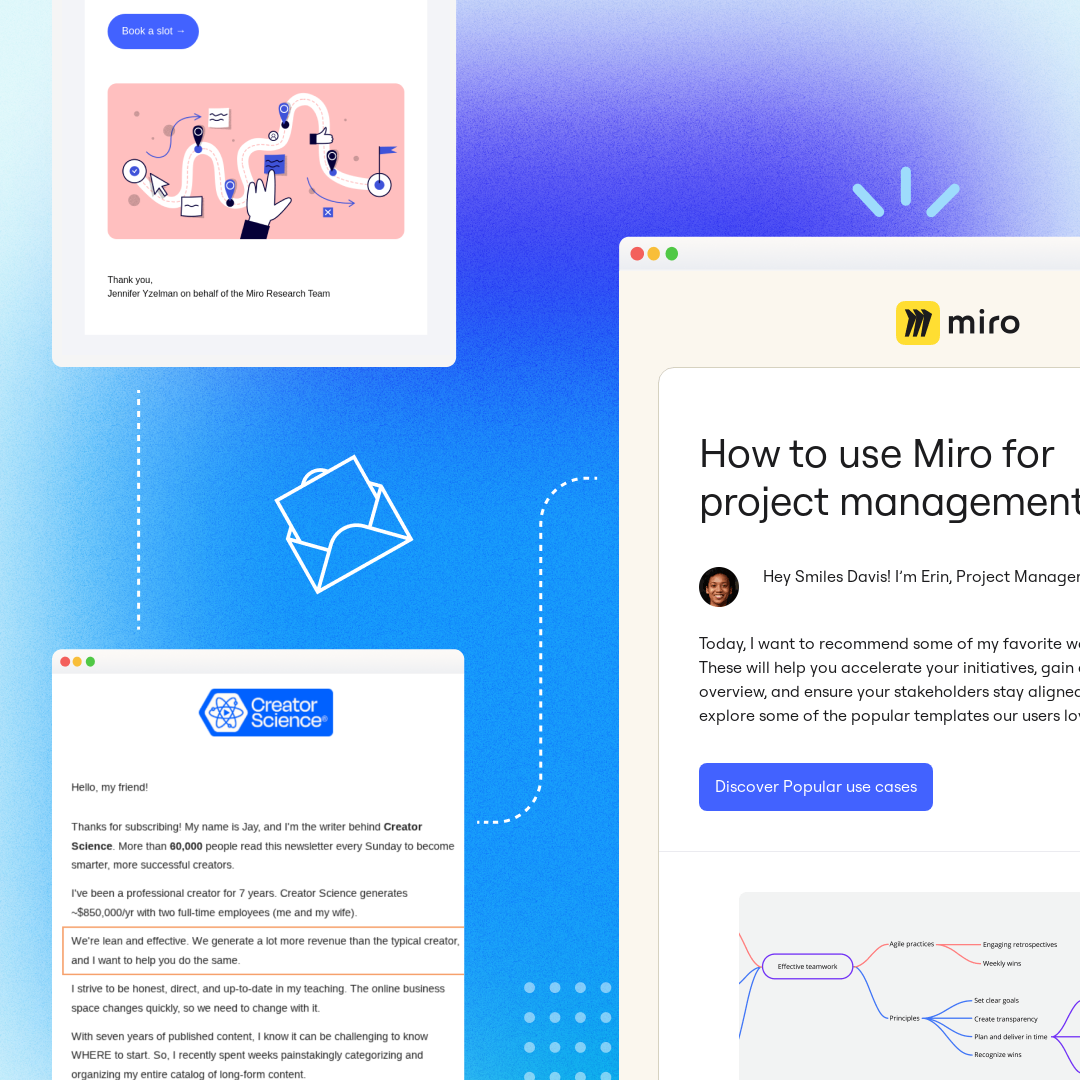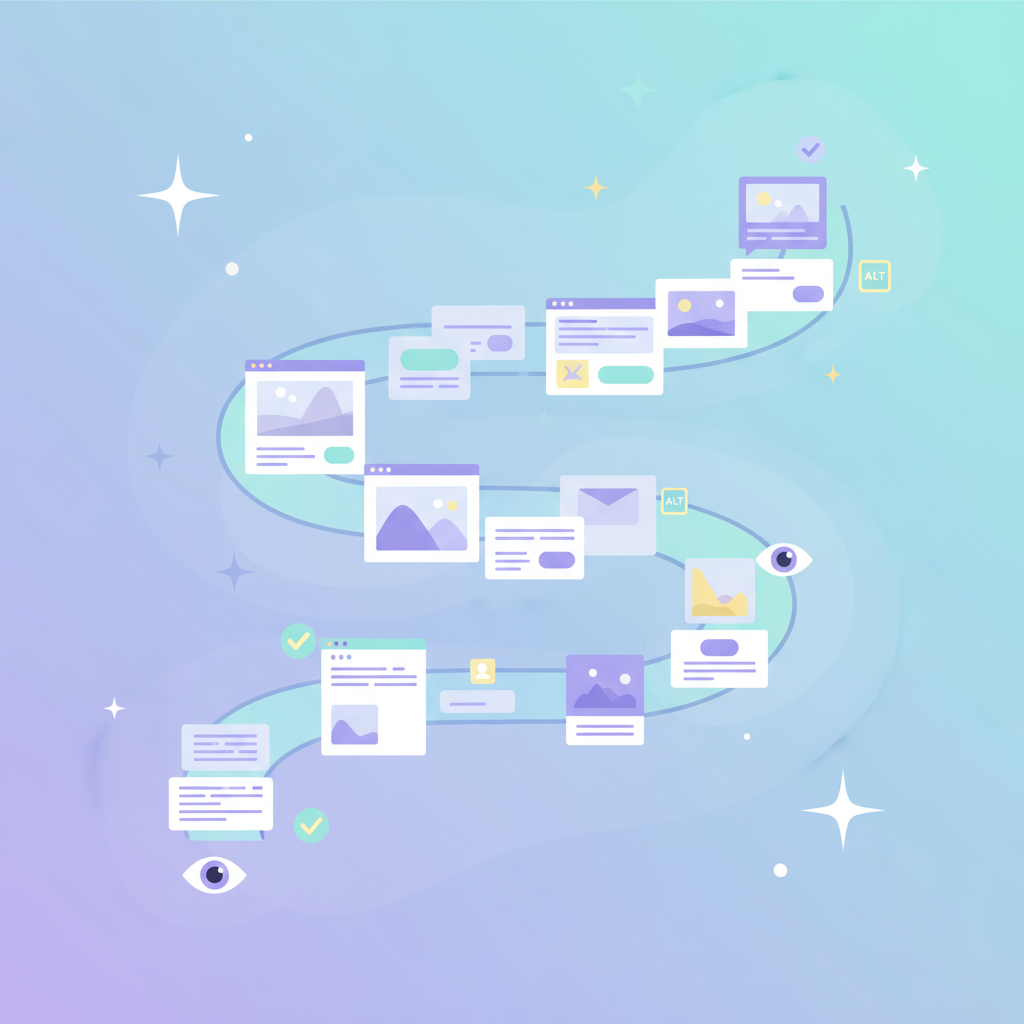
Email newsletters are typically a bit longer than your average promo campaign. They might contain a company update, round-up list, digest, or a story. In short: there's a lot of content. So how do you get people to actually read and scroll? Great design, of course! Read on for our essential email newsletter design ideas.
#1. Think of your newsletter as a series of micro-content.
If you're familiar with modular design, this will be intuitive for you. The idea is to separate your content into bite-sized pieces. Each module contains, say, three sentences and an image. The idea is not to get too long-winded, but if you do need to say a lot, break down what you want to say into segments for easier reading and skimming. Use the newsletter design layout to signal transitions, like:
- Dividers or module borders
- Headers
- Images or design elements
- Space / extra padding
Check out how this daily newsletter from Finimize leverages spacing and headers to present bite-sized pieces of content. (Note: The message is trimmed since the whole email is pretty long!)

Each section gets progressively more detailed for those who want to keep reading. Otherwise, you still get the lede in the first section—"What's going on here?" This means the email is easy to scan, and with headers breaking up the information, no section contains more than a few sentences. This makes the whole thing much easier to read!
TIP: For emails with a lot of text, be sure to increase your margins to maintain readability. You'll probably want a max width of about 500px.
On the flip side, you can also take an approach like Kickstarter's Drip, which uses lines, borders, and colors to separate one piece of newsletter content from the next.

Both approaches are effective. The key is to measure out your content in small pieces. Aim for 3 sentences max in each section or paragraph.
ALSO: Note how dynamic this email is while also following design best practices, like plenty of live text and HTML background colors. Your email doesn't need to be an image to look good! Live text is a must. And when you format wisely, your email looks great and is easy to read.
#2. Include visuals that provide value.
Images serve multiple purposes in an email. They convey information visually, break up the flow of text and create structure, and add a way for readers to click through. But if you're just adding images to your newsletter without much thought, they probably aren't engaging to your readers. So choose and design art that adds value to your newsletter. Stock images can be great, but make sure you're taking the time to personalize them, like adding text.Check out the images in this excerpt from the Washington Post's weekly newsletter,Lily Lines:

These infographic-like images are almost like bonus content. They're providing real information—streamlined, well-designed, sharp-looking—instead of just taking up space. When you're designing a long email newsletter chock-full of content, you have to make it interesting to keep readers scrolling.
3. Cut your intro.
Got a lot to say? Then cut right to the chase. If your newsletter is a daily or weekly digest, chances are, your readers know what to expect. So you don't include a long-winded introduction to set up each email. Instead, dive right into the content you know readers want. Your subject line, preheader, or main header are usually more than enough to set expectations. Check out how CityLab Daily does it:

Likewise, The New York Times' weekly movies digest dives right in, too, after a little greeting:

4. Make it a list.
A great "trick" for email newsletter design is to put your content in a list. Just organizing information in a numbered list is soothing on the brain, isn't it? Suddenly, what you have to say seems more ordered. So many newsletters are formatted this way, especially round-up lists. Bullets are great, too—as seen above from Drip and NYT. Each week, the WW Club starts its newsletter with a numbered list:

What's also great about this email is that each module offers different content, or at least organizes the content in a different way: a numbered list, then a center-aligned list, then a photo grid. The variety makes for a more visually interesting newsletter—and one we want to keep reading.
5. Get personal.
If you've collected any amount of data on your subscriber list, you probably have folks' first names. If that's the case, use 'em! Drawing readers in by addressing them by name is a perfect opportunity to level-up your email newsletter and get readers invested in your content right off the bat. Even a little personalization goes a long way. Many newsletter design examples, like the email above from Finimize,do this well.But, if you don't have names, you can still create a personal tone in your email with your greeting and sign-off. This is particularly important for brands where there's a single figurehead at the helm. Take, for instance, Austin Kleon's weekly newsletter:

There's a lot here we like. First, even though it's not "personalized," the tone is still personal. You have a "Hey y'all" greeting and a "xoxo" sign-off. This cheeky tone won't work for everyone, but for Kleon, it's very on-brand. Plus, there's no time wasted on an intro and the email is formatted as a list. This is all simple and effective, and very readable!Are you feeling the newsletter design inspiration? Ready to design your own irresistible email newsletter and try out these email newsletter design best practices? Try a BEE Pro trial for free, where you'll get access to free newsletter templates, like this fashion-lifestyle template, this inspirational quote newsletter template, and lots more. The tool is easy to use, and in addition to getting access to the best email newsletter design templates, everything you make will be mobile-responsive. Give it a try, and happy designing!



